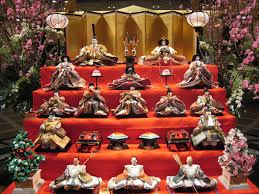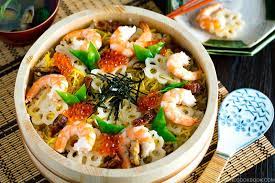
Hinamatsuri, also called Doll’s Day or Girls’ Day, is a special day in Japan. It is celebrated on 3 March of each year, with platforms covered with a red carpet which are used to display a set of ornamental dolls (雛人形, hina-ningyō) representing the Emperor and Empress, attendants, and musicians in traditional court dress of the Heian.
Hinamatsuri is one of the five seasonal festivals that are held on auspicious dates of the Chinese calendar.
The custom of displaying dolls began during the Heian period. Formerly, people believed the dolls possessed the power to contain bad spirits. Hinamatsuri traces its origins to an ancient Japanese custom called hina-nagashi, in which straw hina dolls are set afloat on a boat and sent down a river to the sea, supposedly taking troubles or bad spirits with them. The Shimogamo Shrine celebrates the Nagashibina by floating these dolls between the Takano and Kamo Rivers to pray for the safety of children.
Families normally ensure that girls have a set of the two main dolls before their first Hinamatsuri and the dolls and may be handed down from older generations as heirlooms. The primary aspect of Hinamatsuri is the display of seated male and female dolls, the Emperor and the Empress, which represent a Heian period wedding. These may be as simple as pictures or folded paper or to the more intricately carved three-dimensional dolls.

Typical foods eaten on this day include hina-arare (雛あられ) (multi-coloured rice crackers), chirashizushi (ちらし寿司) (raw fish and vegetables on rice in a bowl) and ichigo daifuku (いちご大福) (strawberries wrapped in adzuki bean paste).

Join the discussion
0 people are already talking about this, why not let us know what you think?